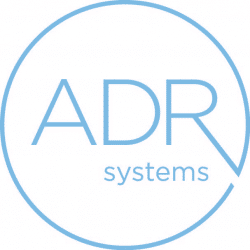Drafting a clear, reasoned arbitration award is a process rather than an event; it takes time. Thoughtful execution can make an award nearly unassailable while conveying to participants the diligence and careful analysis invested in the decision. The participants deserve as much.
Ideally, the award is the result of a well-orchestrated, consensual interaction between counsel and the arbitrator. It identifies the issues, narrows the evidentiary universe, distinguishes the agreed upon facts from those in dispute, makes findings of facts material to the dispute, and applies the law to the facts as found by the arbitrator. With solid input, the arbitrator can write an award that explains the outcome. Counsel’s role in establishing the facts, building submissions and fashioning proposed final awards, is set forth below.
The Facts, Just the Facts
The importance of an accurate analysis of the facts is often underappreciated, even by experienced attorneys. Inasmuch as the law follows the facts, an understanding of the facts is the foundation of any contested proceeding. It should be appreciated that the “facts” can often be a moving target, and that it is common for litigants to engage in after-the-fact justifications or rationalizations of their client’s conduct. Understanding the facts gives counsel the chance to engage in reality testing with the client, who on occasion needs to be reminded that the strength of one’s position does not necessarily equate with the weight of the evidence. No matter how strong the belief, that belief needs to be tested against other evidence, particularly documentary evidence created at the time of significant events material to the underlying dispute.
An accurate determination of facts should ideally begin before the demand for arbitration is filed. The facts are the foundation supporting the case. If the foundation is secure, the arbitration ground will not shift. If the foundation is not secure, the case becomes unwieldy and may induce unnecessary risk.
Construction cases by nature include a number of moving targets, and without a grasp of the facts, motion practice even in arbitration is likely. Some motions are often time wasters but, unfortunately are a fact of life. As old time carpenters say, “It is always easier to get it right the first time — if I have to come back and do it over, it is a loss of time and money.” This should become a mantra for young lawyers who should prepare fact summaries prior to drafting demands for arbitration. Those summaries should identify how a fact allegation will be proved. Good summaries also facilitate preparing for statements, depositions, hearing testimony or proposed findings of fact at the close of the hearing — all of which require assessment of what the facts are (or are proved to be).
The “facts” should be corroborated by other sources, including other witnesses, third parties, adverse parties, etc. When contradictions arise, alternative factual scenarios must be developed, and the fact pattern needs to be assembled with the appreciation that sometimes, things can turn quickly. Although in a jury trial case, one should commence preparation of the factual presentation based on what ultimate instructions will be read to the jury, in arbitration, the support underlying the factual foundation may often shift, akin to pouring footings in unsuitable soil. The parties are not constrained in the arbitration context where the federal (or other applicable state) rules of evidence do not apply. Ample hearsay or other less credible factual evidence may be presented and an effectual advocate must be certain to sift the wheat from the chafe for the panel and submit a clear, well-grounded presentation of the facts.
The First Conference Call
Much needs to be done before the first arbitration conference call. Determining who the arbitrator will be is of critical importance. Different arbitrators have different strengths, styles and weaknesses. Research the background and experience of your arbitrator candidates and choose the one that best fits the client’s needs.
Do not treat the initial conference call casually. Know the foundation of the proceeding, which rules apply and what law. Discuss the scope of the proceeding, discovery, pre-arbitration orders and scheduling. Have a draft first order which captures how the arbitration will proceed.
Schedule follow-up conference calls to keep the case on track.1
Submissions
Rule 36 of the AAA Construction Industry Rules provides that an arbitrator may receive and consider evidence submitted via declaration or affidavit, expert report, or through submission of documents after the hearing, provided the other party is afforded an opportunity to respond. The arbitrator may also allow the filing of briefs and the hearing can be closed on the due date of filing the final party submissions. If provided an opportunity to submit proposed findings of fact and conclusions of law, the parties should consider doing so.
Every case has a best and worst scenario. A best (but realistic) case scenario should lead to a submission that will guide the arbitrator throughout the arbitration. Submissions should contain an overview, agreed exhibits, stipulations (either of fact or law), identify areas of disagreement, list that which can be the subject of inference, and contain a realistic prayer for relief. Ideally, the submission should separate what is most important, emphasize it, and leave trivial matters out of the mix. Counsel should consider creating a timeline of events. The use of a common electronic document repository is encouraged, both to streamline proofs and to refresh or undermine recollection. Key documents should be focused on, and key provisions of important documents should be highlighted. Overkill is unwelcome.
The best reason to carefully prepare construction submissions in advance is the requirement of precision in cases involving real property. Title to real property impacts the rights of known and unknown claimants. As a result, great care must be taken to ensure that an award is complete. It must identify parties, define interests and contain recitations necessary to adjudicate the interests in title, those having encumbrances, and those having a putative interest in the real property found or bond, a legal description, PIN number, and a recitation of the parties litigating the case are essential, as is a statement of the basis for jurisdiction over the parties and premises. A listing of the causes of action presented in the hearing, and a proposed final order are commonly required in the submission and in any reasoned award. If the arbitration award must be filed in the federal court to seek enforcement, these points must be underscored.
Findings of Fact
The parties’ proposed findings should begin with the location and date the matter was commenced, the identities of the participants, the causes of action, and, in a perfect world, specify previously ruled upon motions or significant adjudicated issues. For each litigant, the form of business (if appropriate), the business address, the nature of the business it is engaged in, and its legal representative (including firm name, address and phone) should be captured. For banking institutions, recorded interests should be included.
The following paragraphs should recite any stipulations that the participants have filed (including documents), state whether during the course of the hearing or arbitration other evidence has been admitted and, if so, identify said evidence. An evidence chart is helpful in tracking whether a given piece of evidence has been introduced and captures the nature of the objection for evidence not admitted.
The next series of paragraphs in the proposed award should address the witnesses. Begin with a blanket statement to the effect that for each witness, the arbitrator has considered his/her availability, opportunity to observe, memory, and manner while testifying. If there is evidence that on some other occasion the witness made a statement or acted in a manner inconsistent with his/her testimony on a matter material to the issues, include that as a reference in the proposed findings. It is helpful to identify each significant witness and, when appropriate, comment on the testimony, particularly on any credibility issues and proposed panel findings.
The section on witnesses is followed by a recitation of the date and substance of the contract. There are an infinite variety of contract combinations and permutations. The submission must state what the contract is found to be, who breached and how and whether the breach is material.
After the contract is discussed, the arbitrator notes the timeline. Your submissions should track this format: the case was commenced on or about (a date certain), proceeded until (another date certain), and during the course of the work (what happened), the work generally consisted of (the nature of the work) and the last day of work.
With a recitation of the contract, timeline, and work involved in the dispute, the challenge to construction and lien lawyers, judges and arbitrators is next: EXTRA WORK. Extras are fraught with evidentiary and proof issues, beginning with the notion that every element of each extra must be proved by clear and convincing evidence. Often contracts prohibit extras unless there is written authorization. Does this mean there can be no oral extras? No. Waiver, too, can be proved by clear and convincing evidence, i.e., if the claimant can prove waiver by clear and convincing evidence, extras may be awarded in spite of contract provisions to the contrary. Once more, each extra should be individually analyzed. With extras potentially numbering in the hundreds (if not more on mega projects), this may not be possible. The analysis of extras can be shortened by adjudicating a limited number of extras and allowing negotiations to take place thereafter. The proposed findings can include a statement that as to all other extras, the proof was insufficient to support an award.
If there were inspections (architect, bank, municipal inspector, or others) they should be identified and discussed. Any document revisions (particularly plans, detailed drawings and the like) should be considered and addressed to the extent that they support a specific finding.
The payout history must also be explored. Very often the payout process lends great insight into the way the job was run, when the problems arose and when they became manifest. A recurring question is whether funds were ‘down-streamed’ to subcontractors in appropriate amounts with each payout and whether or not waivers were supplied and if the contractor is seeking to double dip for funds due or earmarked for subcontractors but never paid. Any state construction trust fund doctrines (if applicable) and state prompt payment acts must also be carefully addressed, if raised.
One bit of advice: attempt to isolate the true problem. If the problem rests with the owner and the general contractor, it may be possible to avoid multiple subcontractor and/or sub-subcontractor issues. If the problem is architect-owner, or architect-general, the same may be true.
Conclusions of Law
If the panel allows the parties to submit proposed conclusions of law or briefs summarizing the relevant legal arguments, it is good practice to have a clear division between liability and damages. Once liability is established, damages must be carefully analyzed. Damages are often assumed without regard to proof. Having a damage calculus with reference to specific elements is necessary if counsel is representing a respondent who denies all liability, he/she should also consider requesting that the arbitrator consider bifurcating the arbitration. If the issue is who wins and who loses, why try damages until liability is established? With a determination on liability, the parties can then pause to reflect whether either additional negotiation or arbitration is appropriate. Whether equitable relief or monetary damages should be ordered also comes up on occasion, and must be addressed when it does.
A concomitant to damages is interest. Contract interest, mechanic’s lien interest, judgment interest, and the extent to which interest should be awarded on different counts is a necessary consideration. While statutory lien interest is awarded at a certain rate, contract interest may well be larger should the claimant prevail on the contract count. In most jurisdictions, interest on interest cannot be awarded, but interest can accrue quickly, and can be a large component of potential damages – no double recovery allowed.
Fees, costs, and other incidental matters should be addressed, as should timing. Generally, awards are expected 30 days after the close of the hearing. There have been instances where parties have agreed to shorter and longer times. If there is such an agreement, it must be in writing. Many arbitrators will hold awards until all fees have been paid. The failure of an arbitrator to issue the award in a timely manner has been held to be jurisdictional, and renders the process a waste of time and money.
In Summation
Arbitration was designed to be a less costly and time consuming alternative to litigation. That is generally true. Given the propensity of the courts to confirm awards, and the rarity of successful challenges, it becomes even more important to “get it right the first time.” Assisting the arbitrator to meet that challenge is the work of counsel. Counsel need to prepare, learn, revise, adjust and think throughout the arbitration process. Giving the arbitrator those things necessary to create an appropriate award enhances the likelihood that the arbitrator will in fact get it right. Failing to do so almost certainly introduce the possibility the arbitrator will not get it right.
Accordingly, providing well-reasoned and organized proposed findings of fact and conclusions of law, accompanied by carefully prepared submissions, will assist the arbitrator in rendering an arbitration award that is unassailable.
About Judge Meacham
Judge Meacham has expertise in settling a variety of disputes, particularly those relating to construction, mechanics lien and engineering issues. His warmth, in-depth knowledge and creative approach have made him a well-respected and sought-after neutral. He enjoyed a 19-year judicial career as an Associate Judge, Cook County Circuit Court, sitting as the Supervising Judge of the Mechanics Lien/Mortgage Foreclosure Section of the Chancery Division.
ADR Systems, It’s Settled.®
1 There are similarities and differences among arbitration providers regarding this initial meeting with the arbitrator. For example, the AAA ‘Preliminary Hearing Procedures’ under the Construction Industry Rules are recommended to be held as early in the process as practicable and provide a checklist of subjects that should be addressed during the preliminary hearing. Under these Rules, the arbitrator will issue a written order memorializing the outcomes and agreements made during this hearing. (See AAA Commercial Arbitration Rules, Preliminary Hearing Procedures, P-1, P-2). Similarly, ADR Systems has Commercial Arbitration Rules regarding the ‘Preliminary Conference,’ with some variations from the AAA rules. For example, under ADR Systems’ rules, the preliminary conference is held no more than 60 days after the commencement of the arbitration. In addition to a list of subjects to be covered in this conference, ADR Systems’ rules require that the parties draft a management order to confirm matters decided in the conference, including agreed matters, and send it to the arbitrator within 48 hours of the close of the preliminary conference. (See ADR Systems Commercial Arbitration Rules, Rule 7, Arbitration Procedure and the Preliminary Conference.)
©2017 by the American Bar Association. Reprinted with permission. All rights reserved. This information or any or portion thereof may not be copied or disseminated in any form or by any means or stored in an electronic database or retrieval system without the express written consent of the American Bar Association.





